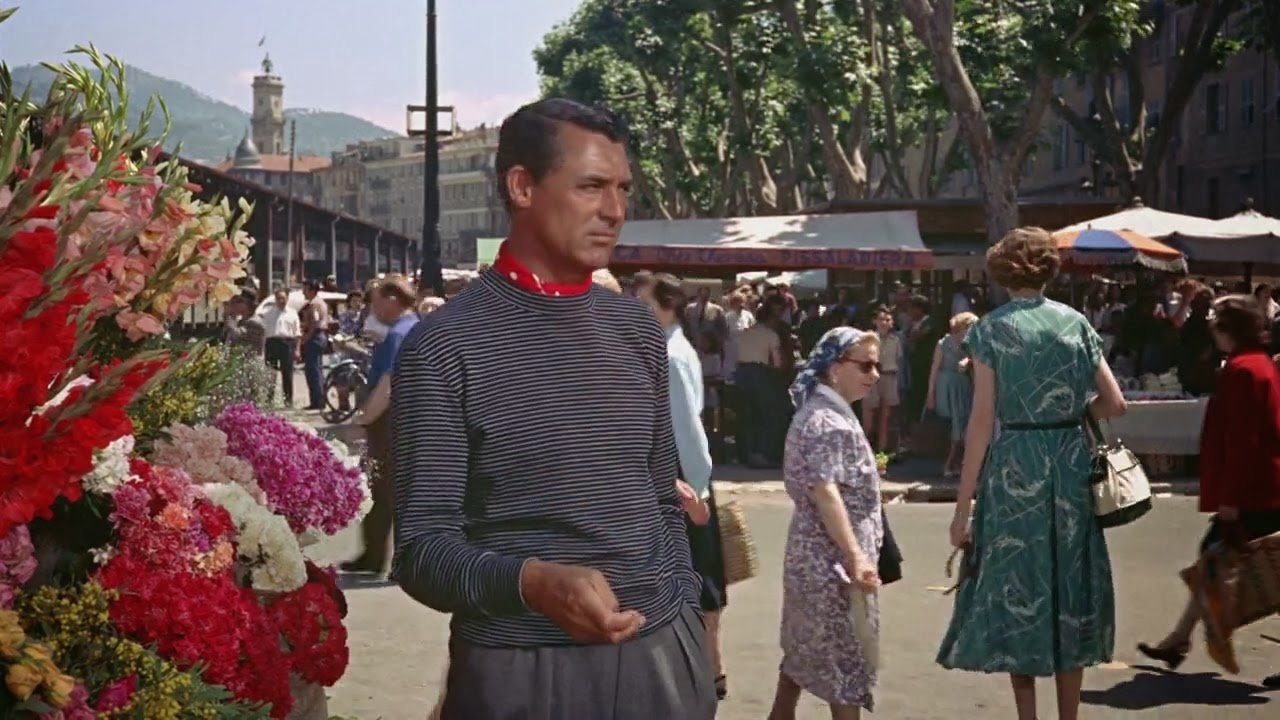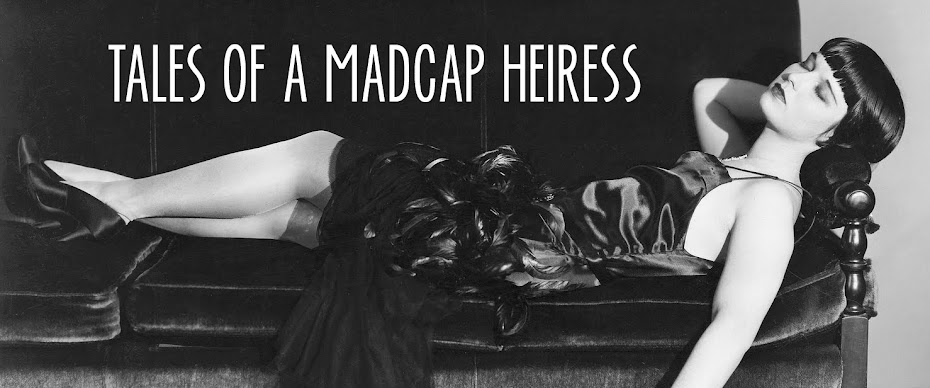“The Complete
Hitchcock" series at Film Forum began last week and the first screening I
attended was To Catch a Thief (1955).
I’d seen the film many times before but never on the
big screen, which is a prerequisite when watching anything filmed in Vista
Vision—a wide screen format developed in the 1950s.
The film opens on
the Riviera where a string of robberies lead police to believe that the cat
burglar John “The Cat” Robie (Cary Grant) is back in business. Robie, who has retired from a life of crime, has no interest in being questioned and manages to elude
the authorities when they arrive at his villa. He heads straight for a restaurant where his old colleagues—all former
criminals who, like Robie, received pardons because of their work with the Resistance
during the war—are employed including Bertani (Charles Vanel) and Foussard
(Jean Martinelli). They are angry with Robie for drawing attention to them
except for Foussard’s daughter, Danielle (Brigitte Auber), who helps him escape by boat.
Intent on unmasking the copycat thief, Robie comes up with a plan. He makes a deal with H.H. Hughson (John Williams), a representative from Lloyds of London who has a vested interest in seeing the stolen jewels returned, that in exchange for a list of potential future victims, he’ll catch the thief. Hughson agrees.
The first person on
the list is American widow Jessie Stevens (Jessie Royce Landis) and her
daughter, Frances “Francie” Stevens (Grace Kelly). Pretending to be a
businessman from Portland, Oregon named Conrad Burns (so plausible), Robie quickly befriends the pair. Yet Francie doesn’t believe his cover and after a harrowing
car chase on a windy mountain road, confronts him and proudly rattles off
how she was able to figure out his true identity. She is obviously attracted to
him but when her mother’s jewels are stolen, she doubts his innocence and
notifies the police.

Once again on the run, Robie stakes out a wealthy home one evening, convinced the thief will show himself. But Robie's plans go awry when he's attacked and in the ensuing struggle the "thief" is killed, falling off a cliff to the rocks below. The dead man turns out to be Foussard, and the
police announce the case closed. Yet Robie points out that Foussard had a fake
leg and couldn’t possibly have been climbing around rooftops, committing the robberies. Realizing that Robie is innocent, Francie confesses her love for him and offers her help.
At a masquerade
ball later that week, Robie sets a trap and recruits Francie,
her mother, and even Hughson in his plans. Up on the rooftop, Robie finally
comes face to face with the real thief who turns out to be Danielle. After slipping and nearly falling to her death (Robie is holding on to her by one hand), she confesses that she's the copycat and that she's been working for her father and Bertani. Robie's name is cleared and he returns to his villa. Francie arrives shortly after and exclaims, "So this is where you live. Mother will love it up here!"

As is true with
most Hitchcock films, the cast is perfect, starting with Cary Grant who is his
usual debonair self. The epitome of sophistication, Grant wore leisure clothes like
other men wear suits and was the definition of tall, dark, and handsome. And for a man who was 51 at the time, incredibly fit. In his youth, Grant ran off and joined the circus where he trained as an acrobat. This athletic prowess adds an air of credibility to the scenes of Grant scurrying across rooftops.
Grace Kelly is
absolutely stunning (no surprise there). She is first introduced sitting on the
beach in a two-piece, turban (yes, a turban), and glasses, applying sunscreen.
She has no dialogue in the scene yet you can’t take your eyes off her. Kelly simply oozes elegance and poise while managing to inject some fire into
her ice princess persona.
Regardless of their
age differences (Kelly was just 26), the two exhibit real chemistry and are electric together. They also have to be one of the best looking couples ever seen on the silver screen. Grant later called Kelly his favourite co-star saying, “With all due respect to dear Ingrid [Bergman], I much
preferred Grace. She had serenity.”
In one of the most
famous scenes in the film, the two are in Francie’s hotel room with the lights
off. She tries to tempt Robie by wearing a “diamond” necklace that she keeps referencing. Finally he says, “You know as well as I do: the necklace is
imitation.” She replies, “Well, I’m not.” They kiss as fireworks explode
outside the window. The metaphor might be heavier than an anvil in a Road
Runner cartoon but there’s nothing corny about the two of them.
Of the supporting players, Jessie Royce Landis is hilarious as Francie’s mother, Brigitte Auber does a good turn as the jealous Danielle, and the always-reliable John Williams as Hughson lends a dose of British sensibility to the Gallic setting.
Costumes by the incomparable
Edith Head make everyone look fabulous from Kelly’s stunning white gown to the
elaborate costumes at the ball to Robie’s jaunty attire of Basque striped shirt
with polka-dot cravat.
And then there’s
the location. I’ve always said that the South of France is where I want to go to
die and frankly, who wouldn’t? Hitchcock took advantage of the area with aerial
shots, and scenes set in and around the picturesque locale. One of the most memorable scenes is the car chase with Kelly driving the lead
vehicle. It always brings a chill when seen today knowing that years later she would
die in a crash on the same road. That withstanding, the film looks fantastic
and won Robert Burks an Oscar for best cinematography.
There is also a lot
of humour in the film, which is perfectly suited to Grant's wry wit. While having lunch at Robie's villa, Hughson compliments his housekeeper's cooking skills, stating "The pastry is as light as air." Robie responds, "Germaine has sensitive hands, an exceedingly light touch. She strangled a German general once, without a sound."
One of the many, many things I
love about Grant as an actor is his sense of timing. In some scenes, he earns
laughs without any dialogue. This occurs early on when he’s fleeing
the police. He jumps on a bus and finds a seat in the back next to a woman with
a cage of canaries, a nice juxtaposition for a man nicknamed “the Cat.”
He looks at the woman on his right and then turns and looks at the man to his left who
happens to be Alfred Hitchcock. He then turns to the camera, keeping a straight face the whole time.
Side note, I
remember seeing this film when I was young on TV. In those pre-letterbox days,
films shot in Vista Vision would have their sides cut off so when this scene
was shown, Hitchcock would be hidden from view so all you saw was Grant
glancing to his side (thank you technology).
While there are other Hitchcock films that are better than To Catch a Thief (this one does
drag a bit around the half-way mark and all of the dubbing of Charles Vanel,
who didn’t speak English, is done poorly) it’s highly enjoyable and worth seeing if just to gaze at the beauty that is Grant and Kelly.
To see the full
schedule of “The Complete Hitchcock,” visit here.




































